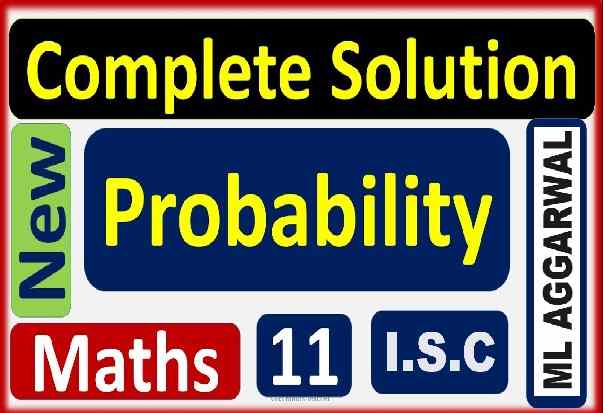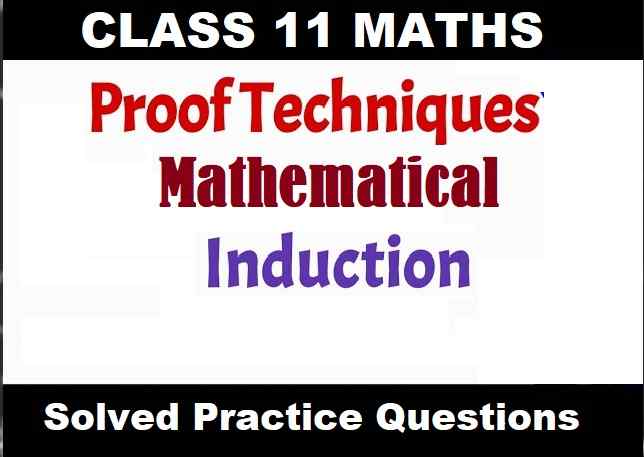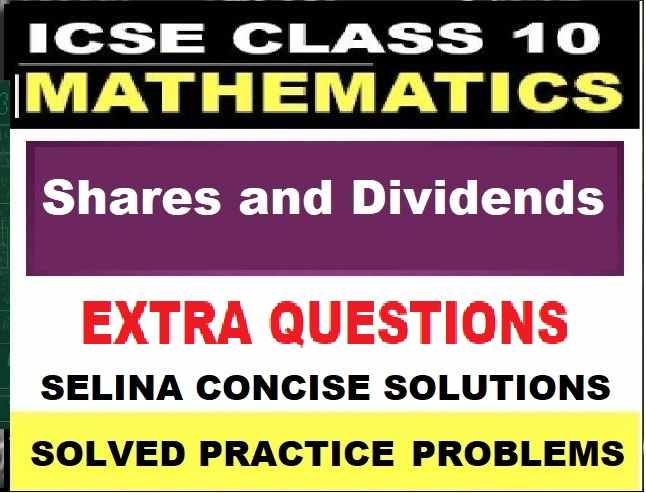Probability ISC Class-11 Understanding Maths ML Aggarwal Solutions Chapter-15. Step by step Solutions of ML Aggarwal ISC Class-11 Mathematics with Exe-1, Exe-2, Exe-3, Exe-4, and Chapter Test Questions. Visit official Website CISCE for detail information about ISC Board Class-11 Mathematics.

Probability ISC Class-11 Understanding Maths ML Aggarwal Solutions
| Board | ISC |
| Class | 11 |
| Subject | Mathematics |
| Chapter-15 | Probability |
| Session | 2024-25 |
| Topics | Solutions of ML Aggarwal |
Probability
Probability ISC Class-11 Understanding Maths ML Aggarwal Solutions Chapter-15
- An experiment is said to be a random experiment if there is more than one possible outcome, and it is impossible to predict the outcome in advance.
- All possible results of an experiment are called its outcomes.
- Let us consider an experiment of rolling a die. All possible outcomes are 6, 5, 4, 3, 2, or 1. The set of all these outcomes {6, 5, 4, 3, 2, 1} is known as the sample space and is denoted by ‘S’.
- Let us consider an experiment of tossing Two coins once. Since the coin can turn up Tail or Head,
Events in Probability
As defined above, the set of all possible outcomes is known as the Sample space. All elements of a sample space are known as Sample points. An event is a subset of the S (sample space). An empty set is also known as the Impossible event. Event A′ is known as Complementary event A
equally likely outcomes
All outcomes with equal probability are called equally likely outcomes. Let S be a finite sample space with equally likely outcomes and A be the event. Therefore, the probability of event A is: P(A) = n(A)/n(S)
Where n(A) = Number of elements on the set A n(S) = Total number of outcomes or the number of elements in the sample space S
Axiomatic Approach to Probability
The axiomatic approach is a different way of defining the probability of an event. In this method, some axioms or rules are depicted to indicate possibilities
Probability of an event:
For a finite sample space with equally likely outcomes Probability of an event P(A) = n(A)/n(S)
Types of Events
Impossible and sure events: The empty set Φ and the sample space S describes events. Intact Φ is called the impossible event and S i.e. whole sample space is called sure event
Simple or elementary event: Each outcome of a random experiment is called an elementary event
Compound events: If an event has more than one outcome is called compound events
Complementary events: Given an event A, the complement of A is the event consisting of all sample space outcomes that do not correspond to the occurrence of A
Mutually Exclusive Events: Two events A and B of a sample space S are mutually exclusive if the occurrence of any one of them excludes the occurrence of the other event. Hence, the two events A and B cannot occur simultaneously and thus P(A ∩ B) = 0.
Exhaustive Events: If E1, E2,…….., En are n events of a sample space S and if E1 ∪ E2 ∪ E3 ∪………. ∪ En = S, then E1, E2,……… E3 are called exhaustive events
Probability Function: Let S = (w1, w2,…… wn) be the sample space associated with a random experiment. Then, a function p which assigns every event A ⊂ S to a unique non-negative real number P(A) is called the probability function.
It follows the axioms hold
Addition Rule of Probabilities
If A and B are two events associated with a random experiment, then
P(A ∪ B) = P(A) + P(B) – P(A ∩ B)
Similarly, for three events A, B, and C, we have
P(A ∪ B ∪ C) = P(A) + P(B) + P(C) – P(A ∩ B) – P(A ∩ C) – P(B ∩ C) + P(A ∩ B ∩ C)
Exe-15.1
Probability ISC Class-11 Understanding Maths ML Aggarwal Solutions Chapter-15
Exe-15.2
Probability ISC Class-11 Maths Solutions Chapter-15
Exe-15.3
Probability ISC Class-11 Solutions Chapter-15
Exe-15.4
Ch-15 Probability ISC Class-11 Maths Solutions
Chapter Test
Probability ISC Class-11 Understanding Maths ML Aggarwal Solutions Chapter-15
— End of Probability ISC Class-11 Understanding Maths ML Aggarwal Solutions Chapter-15 :–
Return to :- ML Aggrawal ISC Class-11 Vol-2 Maths Solutions
Thanks
Please share with your friends



Please upload the solution
done all
Ch 15 probability not given..only showing the ch 14
now full chapter PDF showing/ working
please visit again for analysis
Please give the solutions of probability
uploaded
2023 ke edition pe update karo….